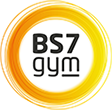2 December 2015
Take a look around the gym any day of the week and you’ll no doubt notice the majority of those training are doing so in a bilateral (that is using both arms or both legs at the same time) manner. I’m specifically talking about resistance training here, but whatever the modality of resistance used, barbell, dumbbell, suspension trainer, body weight or even kettlebell, most people spend nearly all their time training bilaterally. Sure, kettlebells have a single sided (unilateral) component, but we see a lot of bilateral working being done with them, think about the classic kettlebell exercise, the swing for example. Dumbbells can be good in splitting the left and right sides of the upper body, but they still apply a load to both sides of the body which creates a stability element. What we need to think about, regardless of which modality of resistance we are using, is including a selection of exercises that have their foundations in a truly single sided approach.
So, why should you devote a significant portion of your precious time in the gym to working one side at a time? Surely this will just add time to the session when you could train both sides simultaneously. Let us consider the demands of work, sport and life in general. When we do this we will see how unbalanced life can be. Running is a single leg activity, therefore we need to be able to balance and control each limb independently, while also generating high force. Cutting and rapid change of direction in sport, a single leg activity, binding in a rugby scrum – each side is different, boxing – each hand and arm working independently, and so the list goes on. This doesn’t stop at sport, stair climbing, getting in and out the car and putting shopping away, to name but a few, are all activities with large unilateral components. It is essential to train in the gym in a way which best prepares us for the challenges outside of the gym and so to that end we must include single sided work.
Apart from preparing the body for the tasks to come, which will improve performance and reduce the risk of injury, here a few of the specific benefits of unilateral training.
Improved nervous system function, which can enhance balance, physical awareness, strength and power output and reduce energy waste and fatigue.
Greater activation of stabilising muscles. This will include the potential to increase the work from the core muscles as well as the joint stabilisers themselves. Also adding to reducing injury risk.
Correcting imbalances in muscle strength and range of motion. Again increasing performance and reducing injury risk.
Some examples of exercises to include are single leg variations of squat, Romanian deadlift and hops. Upper body exercises can include single arm dumbbell bench press and shoulder press, kettlebell cleans and if you’re going for it, dumbbell or kettlebell snatches.

